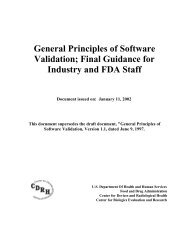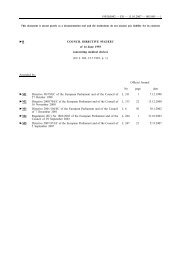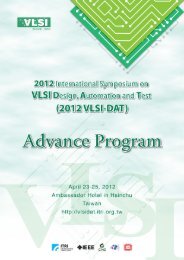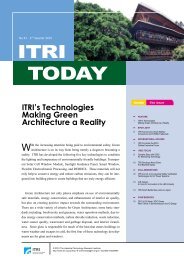Design Control Guidance - Food and Drug Administration
Design Control Guidance - Food and Drug Administration
Design Control Guidance - Food and Drug Administration
You also want an ePaper? Increase the reach of your titles
YUMPU automatically turns print PDFs into web optimized ePapers that Google loves.
action. In other cases, the reviewers are given limited or broad authority to make decisions<strong>and</strong> commit resources to resolve problems. The approach used should be documented.In the real world, reviews often leave unresolved issues. Therefore, review proceduresshould include a process for resolving differences, <strong>and</strong> provide reviewers with enoughleeway to make practical decisions while protecting the integrity of the process.Implementation of corrective actions. Not all identified concerns result in correctiveactions. The reviewers may decide that the issue is erroneous or immaterial. In most cases,however, resolution involves a design change, a requirements change, or a combination ofthe two. If the solution is evident, the reviewers may specify the appropriate correctiveaction; otherwise, an action item will be assigned to study the problem further. In anycase, action items <strong>and</strong> corrective actions are normally tracked under the manufacturer’schange control procedures.RELATIONSHIP OF DESIGN REVIEW TO VERIFICATION ANDVALIDATION. In practice, design review, verification, <strong>and</strong> validation overlap oneanother, <strong>and</strong> the relationship among them may be confusing. As a general rule, thesequence is: verification, review, validation, review.In most cases, verification activities are completed prior to the design review, <strong>and</strong> theverification results are submitted to the reviewers along with the other design output to bereviewed. Alternatively, some verification activities may be treated as components of thedesign review, particularly if the verification activity is complex <strong>and</strong> requiresmultidisciplinary review.Similarly, validation typically involves a variety of activities, including a determination thatthe appropriate verifications <strong>and</strong> reviews have been completed. Thus, at the conclusion ofthe validation effort, a review is usually warranted to assure that the validation is complete<strong>and</strong> adequate.Section E. <strong>Design</strong> Review 3/11/97 Page 28
















